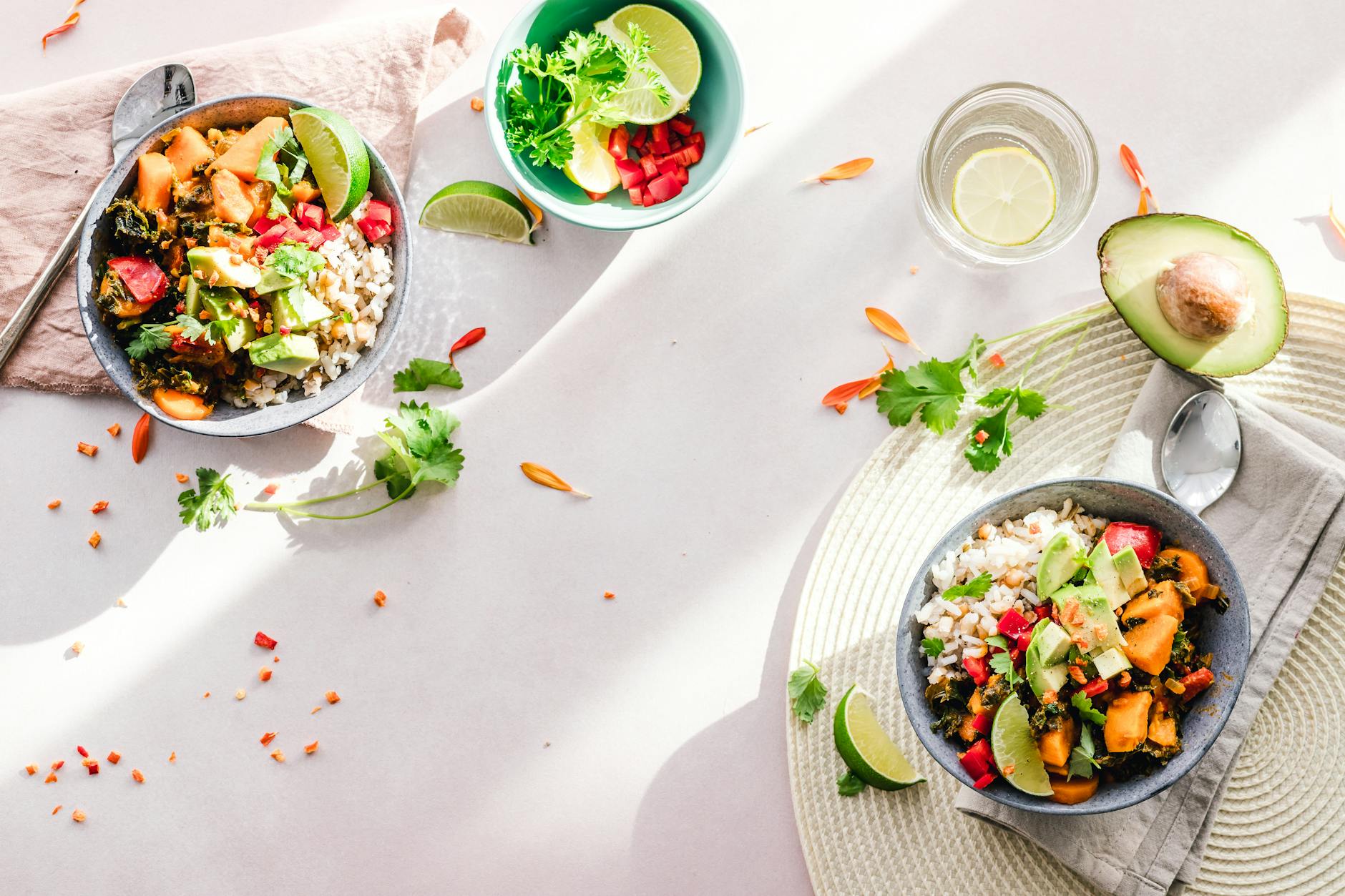The first time I asked for a vegetarian option in Santo Domingo I nearly caused a kitchen revolt. It was a sweltering Saturday at a sea-view fritura, and I blurted out, “¿Tiene algo sin carne, por favor?” The cook’s eyebrows shot sky-high. My Dominican buddy Luis swooped in with a grin, explaining I was a well-meaning gringo working on his Spanish Vocabulary. The chef finally produced a steaming bowl of habichuelas guisadas minus the pork rind. Everyone laughed, I learned to specify “sin cerdo y sin caldo de pollo,” and my plant-based journey in the Caribbean officially began.
Months later, in Medellín’s leafy barrio Laureles, I tried to order vegan arepas topped with avocado. I proudly asked for “arepa vegana,” only to discover the grill was slick with butter. My paisa friend Ana chuckled, whispering, “Di ‘sin mantequilla, parce’—without butter, buddy.” That tweak saved my breakfast and confirmed a truth I wish I’d known sooner: mastering the right Spanish Vocabulary turns awkward dining dramas into effortless cultural exchanges.
Plant Power on Two Shores
Between the mango-sweet mornings of Santo Domingo and the cool mountain evenings of Medellín, I’ve tasted nearly every permutation of rice, beans, and tropical produce. Yet each city seasons those staples with its own linguistic and culinary quirks. In the Dominican Republic, the default plate comes loaded with arroz, habichuelas, and a confidence-boosting slab of stewed meat. Ask for a meat-free dish and you might hear the playful retort, “¿Pero y la proteína, manito?” Meanwhile, Colombians in Antioquia sprinkle cheese on just about everything—including salads—so saying “sin queso, por favor” quickly became my breakfast mantra.
Navigating these differences has been the best classroom I never registered for. When my Colombian roommate calls a lentil stew “potaje de lentejas,” my Dominican neighbor swears by “locrio falso”—the meatless cousin of their national rice medley. The recipes vary, but the need for clear Spanish Vocabulary is constant. Below lives the cheat sheet that has rescued me from hidden chicken broth, mystery sauces, and more surprise cheeses than I care to count.
Practical Vocabulary
| Spanish | English | Usage Tip |
|---|---|---|
| Vegetariano | Vegetarian | Say “Soy vegetariano/-a” up front. |
| Vegano | Vegan | Pair with “estricto” for emphasis. |
| Sin carne | Without meat | Follow with specifics: “sin res, sin cerdo.” |
| Sin lácteos | Dairy-free | Add to coffee orders. |
| Sin huevo | No egg | Useful for baked goods. |
| Proteína vegetal | Plant protein | Ask if beans or tofu are available. |
| Caldo | Broth | Confirm it’s veggie: “caldo de verduras.” |
| Guiso | Stew | Ask about hidden meats. |
| Saltear | To sauté | Dominicans say “saltear” less often than “sofrito.” |
| Sofreír | To sauté lightly | Key for aromatics. |
| Lentejas | Lentils | Common vegan protein. |
| Garbanzos | Chickpeas | Popular in Colombian bowls. |
| Quinoa | Quinoa | Trendy, but confirm no chicken stock. |
| Verduras | Vegetables | Colombians may say “hortalizas.” |
| Aguacate | Avocado | Always clarify butter use on grill. |
| Chinola | Passion fruit (DR) | Colombian word: maracuyá. |
| Platón | Plantain dish (DR) | Colombians call it patacón. |
| Jugo natural | Fresh juice | Ask for “sin azúcar.” |
| Leche vegetal | Plant milk | Soy, almond, oat: “leche de avena.” |
| Sin mantequilla | Without butter | Critical for arepas. |
| Rebozado | Battered/fried | May hide egg or milk. |
| Crujiente | Crispy | Ask if breaded with egg. |
| Aliño | Seasoning (CO) | Dominican counterpart: sazón. |
| Vaina | Thing/whatever (DR) | Handy filler if you forget a noun. |
| Concho | Moto-taxi (DR) | Call one to reach vegan cafés. |
| Parce | Buddy (CO) | Builds instant rapport. |
| Chévere | Cool/awesome (CO) | Praise tasty tofu. |
| Empanizado | Breaded | Usually not vegan—confirm. |
| Polvo de ajo | Garlic powder | Check if sauce uses it instead of fresh garlic. |
| Sin gluten | Gluten-free | May remove breading. |
| Tofú | Tofu | Less common; spell it out. |
| Tempeh | Tempeh | Rare, but appears in fusion spots. |
| Brote | Sprout | Alfalfa, mung, etc. |
| Hummus | Hummus | Confirm no dairy yogurt inside. |
| Cúrcuma | Turmeric | Popular in health cafés. |
| Orégano | Oregano | Dominicans love it in beans. |
| Cilantro | Cilantro | Some Colombians say “culantro.” |
| Hierbabuena | Mint | Refreshing in juices. |
| Estofado | Slow stew | Verify meat content. |
| Nixtamal | Lime-treated corn | For authentic tortillas. |
| Arte vegetal | Food art | Trendy plating description. |
| Degustar | To sample | Use when asking to try. |
| Sobremesa | Post-meal chat | Best place to swap recipes. |
Ordering Without Panic
Afternoons in Santo Domingo are bright enough to bleach your retinas, but I’ve found vegan life becomes clearer once you master three steps. First, declare your dietary stance before the server even pours water. Second, praise local staples—say how much you love moro de habichuelas negras or tostones to frame your request as a cultural collaboration, not critique. Third, ask questions about broth and butter like a detective with a polite smile.
In Medellín, it’s common to see Menu del Día boards advertising “almuerzo vegetariano” with a small carrot icon. Yet hidden cheese can lurk in the rice, and the soup may harbor chicken bones for flavor. The key phrase “¿La sopa es totalmente de verduras?” has saved me repeatedly. Dominicans aren’t as menu-icon friendly, but kitchens are wonderfully adaptable once you express gratitude and curiosity. Saying, “Muchas gracias por ayudarme a encontrar algo sin huevo,” almost always earns an approving nod and an extra scoop of beans.
Real-Life Mini-Dialogues
—Buenas, ¿tienes plato vegano hoy? (DR)
—Hi, do you have a vegan dish today?
—Claro, manito, podemos hacerte un guiso de garbanzos sin caldo de pollo. (DR)
—Sure, bro, we can whip up a chickpea stew without chicken broth.
—¿Le ponen mantequilla a la plancha? (CO)
—Do you put butter on the grill?
—Un poquito, parce, pero la limpiamos y la engrasamos con aceite. (CO)
—A little, buddy, but we’ll wipe it and oil it instead.
—¿Ese jugo viene sin azúcar o le añaden? (DR)
—Does that juice come unsweetened or do you add sugar?
—Viene natural, pero si quieres le ponemos un chin de miel. (DR)
—It’s natural, but we can add a splash of honey if you’d like.
—¿Qué proteína vegetal recomienda para la ensalada? (CO)
—What plant protein do you recommend for the salad?
—Tofú marinado con aliños paisas, suena chévere, ¿cierto? (CO)
—Marinated tofu with paisa seasonings, sounds cool, right?
—Necesito algo sin gluten también. ¿Hay opción? (DR)
—I need something gluten-free too. Is there an option?
—Podemos hacerte un platón de yuca al limón con hierbabuena fresca. (DR)
—We can make you a plate of lime-kissed cassava with fresh mint.
—¿Este estofado tiene caldo de res? (CO)
—Does this stew have beef broth?
—Negativo, solo lleva verduras y especias. (CO)
—No, it only has veggies and spices.
—¡Perfecto! Entonces, degustemos ese primero. (DR)
—Perfect! Then let’s sample that one first.
—Brutal. Te traigo servilletas y algo picante si quieres. (CO)
—Awesome. I’ll bring napkins and something spicy if you want.
—Después hacemos la sobremesa con café de olla, ¿te apuntas? (DR)
—Afterward we’ll do post-meal chat with spiced coffee, you in?
—De una, parce, pero que sea sin leche, ¿vale? (CO)
—Absolutely, buddy, but make it dairy-free, okay?
—Hecho. Y si queda rico, compartimos la receta. (DR)
—Deal. And if it turns out tasty, we’ll share the recipe.
—Así ampliamos nuestro Spanish Vocabulary y nuestras barrigas felices. (CO)
—That way we expand our Spanish Vocabulary and our happy bellies.
—¡Esa vaina suena mejor que un concho a la playa! (DR)
—That thing sounds better than a moto-taxi ride to the beach!
Everyday Green Wins
Even street food can be veggie-friendly once you decode the language. In Santiago, I discovered vendors willing to grill yaroa vegetariana—plantain layers with sautéed veggies—if I supplied the vegan cheese. In Bogotá’s Plaza de Mercado La Perseverancia, stall owners brag about their ají de aguacate so fiercely that they’ll let you taste spoons from rival stands just to prove theirs reigns supreme. Those moments become vocabulary gold mines: one stand calls cilantro “cilantrico,” another insists on “culantro,” and my dictionary swells.
When you stumble, lean into humor. In Punta Cana, I accidentally requested “falda de tofu”—literally tofu skirt steak. The waiter blinked before saying, “Oye, eso sería un invento interesante.” We laughed, then he served me grilled eggplant slices dubbed “faldita vegana.” Another phrase in my Spanish Vocabulary right there.
Cultural Gems
Tip: In Bogotá, asking for “tinto campesino sin panela” gets you black coffee without sugar—an ideal vegan pick-me-up between avocado toasts.
Insight: Dominicans often season beans with ají gustoso, a mild pepper rarely found in Colombia. If you crave extra kick, ask for ají picante, but prepare for sweat.
Warning: Many Caribbean cooks use sazón de pollo bouillon cubes out of habit; politely confirm “sin cubito” to avoid hidden animal products.
Pro Move: Compliment the chef in local slang—tell a Dominican cook “Ese moro quedó jevi” or a Colombian vendor “Esa arepa está berraca”—and watch doors swing open for custom vegan tweaks.
Flavorful Pitfalls and Clever Fixes
Despite all prep, surprises pop up like cilantro in sidewalk cracks. One Medellín café blended honey into its almond milk without listing it. I now say, “¿La leche de almendra es cien por ciento vegetal, sin miel?” A DR bakery brushed egg wash on supposedly vegan empanadas; these days I clarify with, “¿El hojaldre lleva huevo o manteca?” Each bump reinforces a richer Spanish Vocabulary, and soon mistakes morph into proud stories told over cold-brew cacao.
There’s also the social side. Dominicans believe a meal without meat is a snack, while Colombians might tease that a vegan plate looks like “comida de conejo”—rabbit food. I counter by hosting potlucks where I cook locrio de vegetales and paisa friends bring fríjol cargamanto stewed in coconut oil. When taste buds are happy, stereotypes melt faster than vegan cheese on a hot arepa.
Sowing Seeds of Fluency
After a decade flitting between islands and mountains, I’ve learned that vegetarian and vegan dining acts as a quirky language school. Each time I ask a waitress whether the rice is sautéed in butter, I rehearse conjugations of llevar and usar. Each time a chef in Medellín congratulates my pronunciation of “hierbabuena,” my confidence blooms. The conversations stretch into sobremesa, where we trade jokes about conchos zigzagging traffic or reminisce about failed tofu barbecues on Caribbean beaches. That blend of laughter, language, and legumes nourishes more than any single dish.
Back in that Santiago courtyard, the same chef who chuckled at my early flubs now waves whenever I pass by. He even kept a jar of coconut aminos after I introduced the ingredient. In Medellín, Ana’s local arepa stand installed a second griddle “just for veganos.” These gestures show that words, when chosen kindly, season relationships as effectively as oregano seasons beans.
So, fellow expats, sharpen your knives and your nouns. Whether you crave lentil tacos in Santo Domingo or avocado bowls in Bogotá, the right Spanish Vocabulary will transform wait-staff into allies and strangers into cooking coaches. Order boldly, laugh at slip-ups, and text me the moment you convince a Dominican colmado to stock tempeh—I’m still working on that holy grail.



